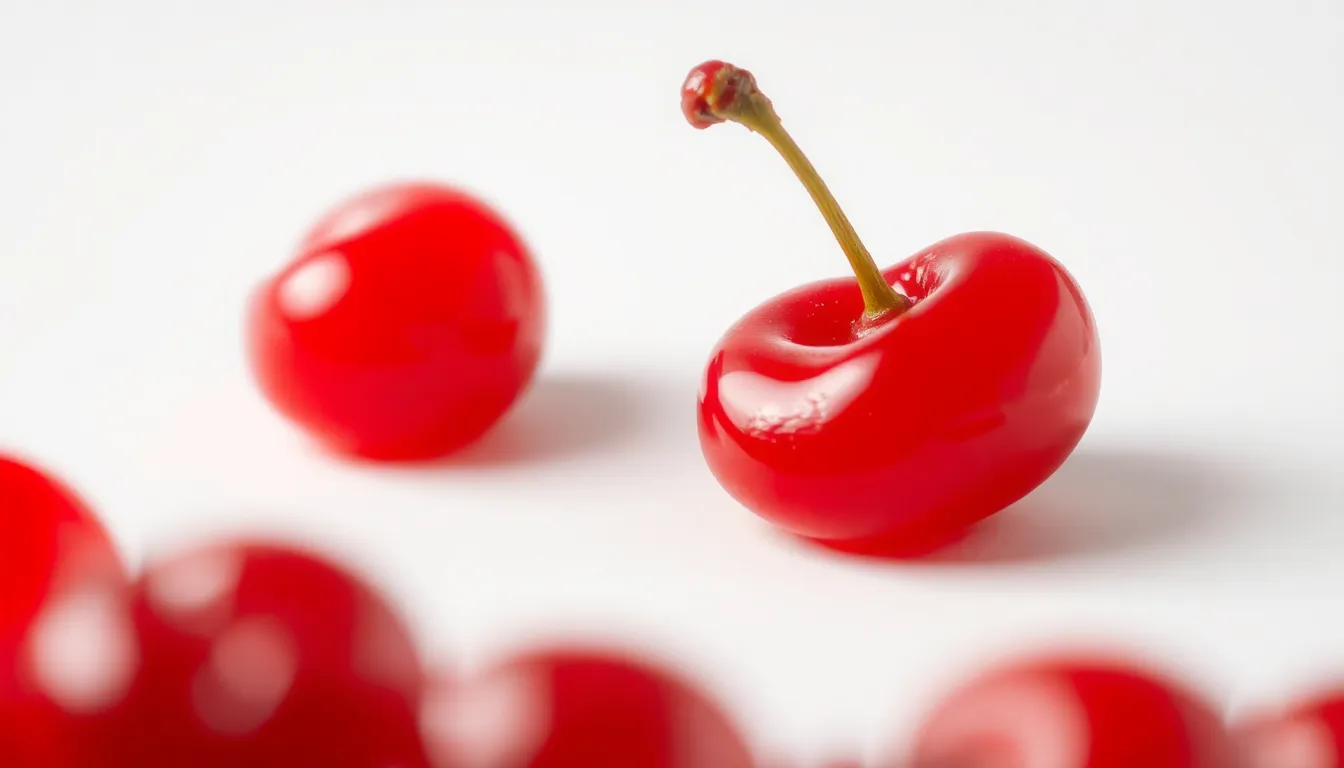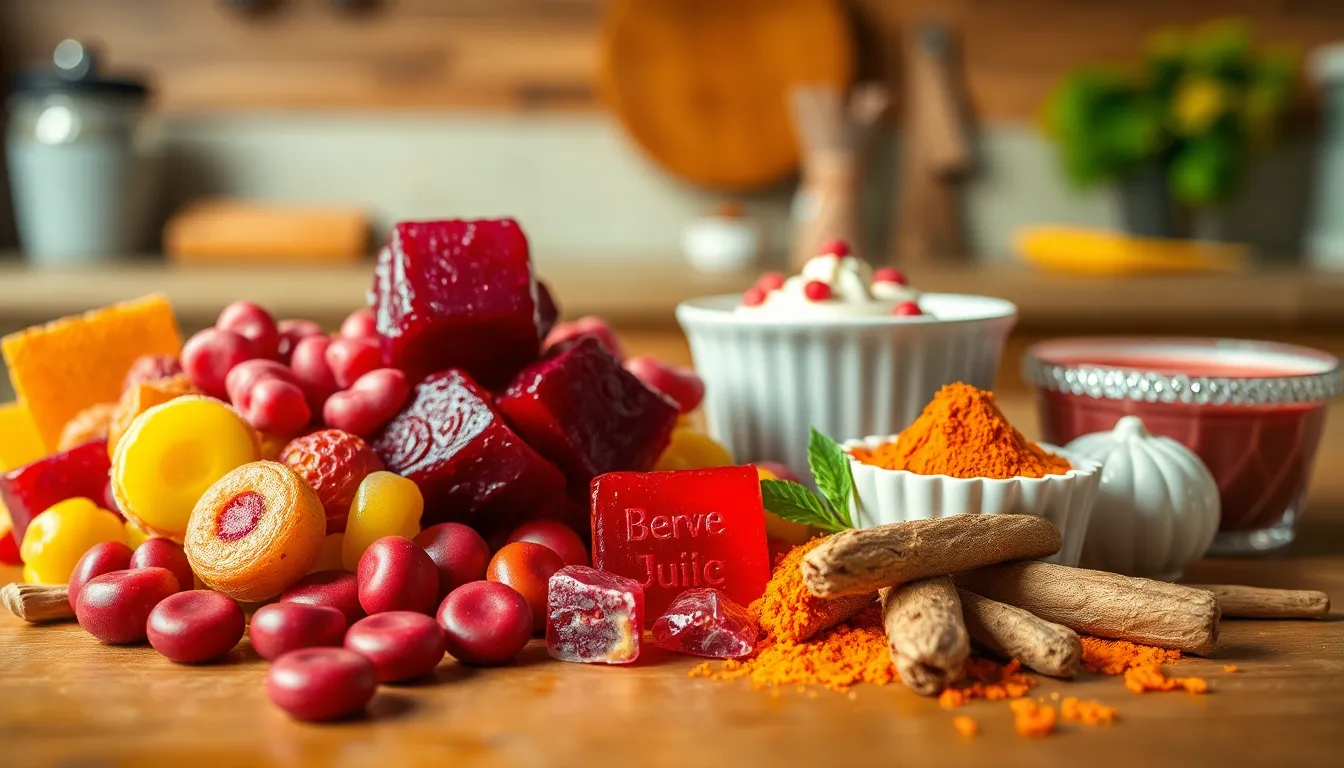Table of Contents
ToggleRed 3, a synthetic dye commonly used in food and cosmetics, has sparked considerable debate over its safety. As consumers become more health-conscious, many are questioning the potential risks associated with artificial additives. This vibrant colorant, often found in candies, beverages, and even some personal care products, raises eyebrows due to its controversial history.
Research has linked Red 3 to various health concerns, particularly its potential effects on children and individuals with sensitivities. With increasing scrutiny from health organizations and regulatory bodies, understanding the implications of consuming products containing this dye is crucial. This article delves into the evidence surrounding Red 3, exploring its safety and whether it’s truly harmful to health.
Overview of Red 3
Red 3 is a synthetic dye known for its vibrant red hue. It serves various roles in the food and cosmetics industries, leading to increased scrutiny regarding its safety.
What Is Red 3?
Red 3, also known as E127, is a water-soluble azo dye. Developed in the 1960s, it’s primarily derived from petroleum products. Red 3’s primary chemical structure includes the azo group, which contributes to its coloring properties. Regulatory bodies, including the FDA, approved it for use, but concerns about its health impacts persist.
Common Uses of Red 3
Red 3 appears in a range of products, including:
- Food: Common in candies, desserts, and gelatin products to enhance color appeal.
- Cosmetics: Utilized in lipsticks, blushers, and other makeup items for vibrant pigmentation.
- Pharmaceuticals: Used in certain medications and supplements for easy identification.
The prevalence of Red 3 in these items underscores the importance of consumer awareness regarding its potential health implications.
Health Concerns


Health concerns regarding Red 3 arise from its widespread use and potential link to adverse effects. Understanding these issues is crucial for informed consumer choices.
Potential Side Effects
Potential side effects of Red 3 include allergic reactions, hyperactivity, and behavioral changes, particularly in children. Studies indicate that some individuals may experience sensitivity, leading to symptoms like hives or asthma. Although the FDA has classified Red 3 as safe for consumption, issuing caution regarding its intake remains prudent. Specifically, consuming large amounts poses risks, especially for vulnerable groups such as children.
Controversies Surrounding Red 3
Controversies center around Red 3’s safety and the adequacy of regulatory measures. Research conducted in the late 1980s linked Red 3 to cancer in laboratory animals, raising alarm among health advocates. Although the FDA banned the dye in cosmetics following these findings, it remains permissible in food applications, sparking debate among health professionals. Critics argue that modern studies often neglect outdated research, advocating for reevaluation of Red 3’s safety in food products. The discrepancy between its cosmetic use ban and acceptance in food raises questions about regulatory consistency and consumer protection.
Regulatory Status
Regulatory scrutiny surrounding Red 3 reveals ongoing debates about its safety for consumer use in food and cosmetics. Understanding these regulations provides insight into the dye’s status in different regions.
FDA Regulations
The Food and Drug Administration (FDA) classifies Red 3 as safe for consumption, permitting its use in food products under specific conditions. While the FDA acknowledges potential issues at high intake levels, especially concerning sensitive populations, it allows Red 3 in food items. However, a pivotal moment came when studies indicated a connection between Red 3 and cancer in laboratory animals, leading to a ban on its use in cosmetics in 1990. This discrepancy raises significant questions about safety assessments and consumer protection in food applications.
International Guidelines
Internationally, different health organizations have varied approaches to Red 3. The European Food Safety Authority (EFSA) conducts thorough evaluations of food additives, classifying Red 3 as E127 with a maximum permitted level in certain foods. The Joint FAO/WHO Expert Committee on Food Additives (JECFA) also reviews the dye, recommending strict limits for its use. Regulatory frameworks across countries often enforce stringent labeling requirements for food products containing Red 3, reflecting increasing consumer demand for transparency and safety in food additives.
Alternatives to Red 3
Consumers increasingly seek options that avoid synthetic dyes like Red 3. Instead, they may turn to natural food colorants or synthetic alternatives that meet safety standards.
Natural Food Colorants
Natural food colorants offer vibrant shades while minimizing health risks. These include:
- Beet Juice Powder: Produces a deep red color, often found in juices and desserts.
- Turmeric: Provides a yellow hue, commonly used in savory dishes and mustards.
- Spirulina: A blue-green algae used to create green or blue colors in smoothies and snack bars.
- Paprika Extract: Offers rich red tones, frequently used in sauces and seasonings.
- Carrot Juice: Imparts an orange color, popular in beverages and baked goods.
Natural colorants often deliver additional nutritional benefits alongside their coloring properties, appealing to health-conscious consumers.
Synthetic Alternatives
Synthetic alternatives can provide color stability and consistency. Options include:
- Red 40 (Allura Red): Commonly used in candies and drinks, it’s approved by the FDA and associated with fewer safety concerns.
- Carmine: Derived from cochineal insects, this red dye is popular in cosmetics and some food products but poses allergy risks for certain individuals.
- Anthocyanins: Found in various fruits and vegetables, these pigments offer red and purple shades and are emerging as safer synthetic options.
- Brilliant Blue FCF: This blue dye can mix with other colors for vibrant shades, commonly used in confections and ice creams.
- Yellow 5 (Tartrazine): Often combined with other dyes for a broader color range, it’s widely used in various food items.
These synthetic alternatives, while effective, necessitate consumer awareness regarding potential sensitivities and preferences.







